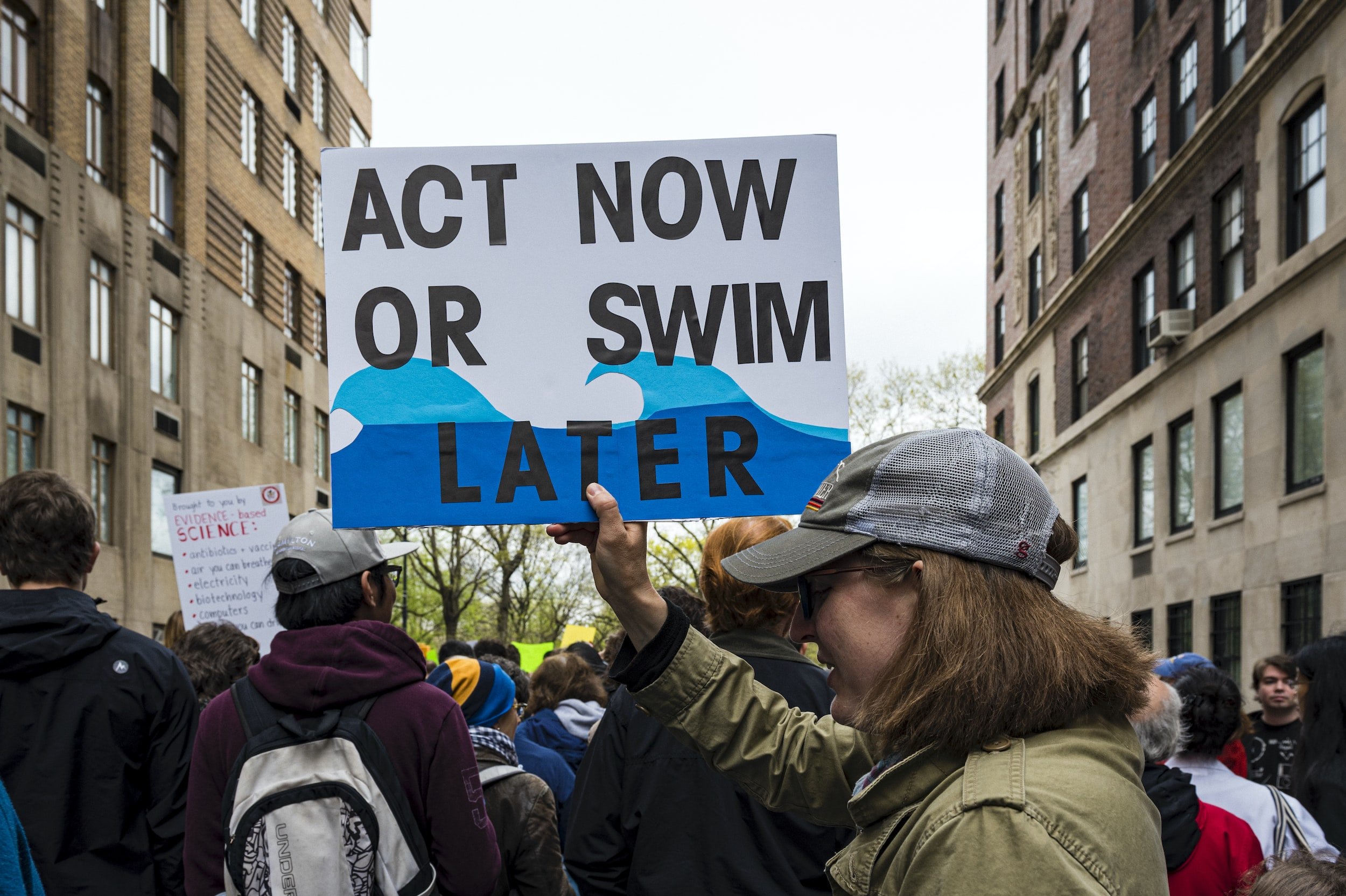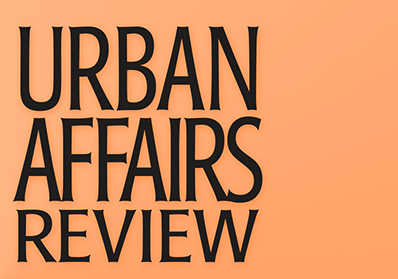
Thank You: A Note From the Editors
As we near the end of our tenure as editors of Urban Affairs Review, we want to thank and publicly acknowledge the people who have supported UAR through service on our editorial board between January 2014 and December 2022. We are grateful for your encouragement, advice, and willingness to spend your time helping us produce this journal.

How Local Contexts Matter for Local Immigrant Policies
Local policies related to immigrant attraction and settlement include efforts to attract and support immigrants for economic development purposes (entrepreneurialism and business start-up support, credentialing), smooth transitions (multi-lingual services, ESL, citizenship support), embracing diversity (multi-cultural community events), and providing assistance in accessing needed local services (housing, health care, employment support).

Why Political Scientists Should Study Smaller Cities
The United Nations estimates more than half of the global population currently lives in cities, and 68% of the world’s population is projected to live in urban areas by 2050 (United Nations 2018). A large portion of this growing urban population lives outside of major metropolitan areas. Yet much of our knowledge about urban politics comes from studying the largest cities, and smaller cities are systematically understudied relative to their share of the population.

Water Utility Districts as Facilitators of Regional Climate Change Partnerships
Unlike much of the literature on regional activity that centers on how general-purpose local governments choose to respond to externalities or other cross-boundary drivers, Jayce Farmer (University of Nevada-Las Vegas) centers existing water utility districts as the key independent variable.

Envisioning a Role for RIGOs in Cross-Boundary Land Use Regulation
The acknowledged value of regional planning is evident in the proliferation of state and federal policies that require coordination between local authorities. However, as Thomas Skuzinski (Northern Illinois University)and Carolina Velandia Hernandez (Northern Illinois University) note, even while regional planning efforts exist the plans themselves lack teeth and land use regulation remains a predominantly local activity.

Investing in Emerging Regional Institutions to Promote Equitable Climate-Ready Regions
In this contribution, Catherine Ashcraft (University of New Hampshire) and Christina Rosan (Temple University) explore the potential for regional planning solutions to the climate crisis in a case study of two initiatives in New England. They note that climate change, like many wicked problems, is a complex set of issues that faces numerous political barriers, and that solutions are unlikely to be unlocked at one level of government.

Projects Not Systems: Why New York Doesn’t Have a RIGO
The greater New York City region is both a substantial population and financial center in the United States, making it a highly contested political territory. Despite (and perhaps because of) its value in this regard, Cameron Gordon (Australian National University), Richard Flanagan (City University of New York), and Jonathan Peters (City University of New York) argue that intense fragmentation in the region creates hurdles to effective regionalism.

Tightening Networks and Deepening Co-Regionalism
Often, scholars investigate co-regional actions by evaluating them in their final form: an interlocal agreement, the charter of a regional authority, or the decisions of a Regional Intergovernmental Organization board. In this post, Lachezar G. Anguelov (The Evergreen State College) introduces us to an embryonic informal network addressing drug addiction and overdoses with stakeholders crossing jurisdictional, sectoral, and policy boundaries.

American Regionalism and the Constellation of Mechanisms for Cross-Boundary Cooperation
In this colloquium, we explore the variety of actors involved in the cross-boundary cooperation that we associate with American regional governance and the evolving connections and relationships between them. We aim to produce a cutting-edge review of the state of the field of American regionalism that is accessible, thought provoking, and forward looking.

Do Shallow Rental Subsidies Promote Housing Stability?
The District of Columbia piloted and evaluated a shallow rent subsidy to answer two questions: Do shallow flexible rental subsidies promote housing stability? And, can they be a vehicle to further stretch the existing housing resources to serve more people?

Wealthier Neighbors and Higher Rents
When it comes to public housing in the United States, the Department of Housing and Urban Development (HUD) is in a bind. Public housing developments across the country are quite literally crumbling in the face of a $70 billion backlog of deferred maintenance and repairs, placing many of the 1.8 million low-income tenants in housing units that may be dysfunctional or unsafe. However, previous efforts to redevelop public housing—most notably, HOPE VI—forcibly displaced low-income renters from their homes, removed affordable housing from cities through demolition without replacement, and catalyzed the gentrification of majority-Black neighborhoods in cities across the country.

UAR Best Paper Award at APSA 2022
Urban Affairs Review is sponsoring a $250 award given by the the Urban and Local Politics Section for the Best Paper in Urban or Regional Politics presented at the 2022 American Political Science Association conference. We encourage chairs of all Urban and Local Politics Section panels to nominate papers. We also welcome self-nominations. Papers presented on any panel associated with the conference are eligible for this award.

The Role of Women in Local Governments
In recent years, the reduction of available resources, increased debt and the decentralisation of services have placed many governments in precarious situations. If we focus on the local public sector, municipalities are increasingly challenged to present balanced budgets without raising taxes or reducing vital services for their citizens. Thus, it is essential for local governments (LGs) to provide their services in the most efficient way, which would allow them to provide more services with fewer resources or the same services at a lower cost. The term “efficiency” refers to the level of performance of an organization (Farrell 1957). It represents the level of output that can be obtained by a level of input, in comparison with the optimal combination input-output.

Using Emerging Hot Spot Analysis to Explore Spatiotemporal Patterns of Housing Vacancy in Ohio Metropolitan Statistical Areas
Sophisticated methods for studying changes in the physical forms of cities that are losing population (i.e. “shrinking cities”) are lacking in the literature. This research highlights the use of a newer method—ArcGIS Pro’s emerging hot spot analysis of space-time cubes from defined locations—to examine the spread of housing vacancy, a common indicator of city shrinkage.

Do Neighborhood Contexts Influence the Prevalence of Neighbor Problems?
In our UAR article, “The problems with neighbors: An examination of the influence of neighborhood context using large scale administrative data,” we examined neighbor problems as manifest in reported complaints to a local municipality in Australia—the Brisbane City Council—to understand how neighborhood features affect the likelihood of neighbors experiencing problems with each other.

Walking the Talk
Why do some municipalities adopt ambitious climate action plans and others do not? How can we encourage more cities to be ambitious? The Intergovernmental Panel on Climate Change (IPCC) has warned that CO2 emissions must reach net zero by 2050 to prevent the most devastating consequences of global climate change. Cities consume more than two-third of the world’s energy, emit more than seventy percent of the global CO2 emissions, and contain 55% of the world’s population, so their efforts will be critical to our ability to prevent catastrophic combat climate change.

Undermining Sanctuary? When Local and National Partisan Cues Diverge
In our paper, “Undermining Sanctuary? When Local and National Partisan Cues Diverge,” we show that Tucson Democrats split their vote on the sanctuary initiative ultimately leading to its downfall. To understand this outcome, we advance a partisan mixed-cues theoretical framework in which Democratic elites communicated a split cue environment — some supported the initiative while others opposed it, whereas Republicans communicated universal opposition to the initiative.

New Journal Impact Scores
2021 UAR Two-Year Journal Impact Factor Released in June 2022 is 2.387

Officer-Involved Killings and the Repression of Protest
It is clear from the news, and perhaps even from personal experience, that many citizens are mobilizing to express outrage and demand justice in the wake of officer-involved killings. However, despite the fact that officer-involved killings are the focus of such an important social movement, very little work attempts to explain the circumstances that lead the public to protest the deaths of particular victims.

Measuring and Explaining Stalled Gentrification in Newark, NJ
Our paper examines the concept of “stalled gentrification,” or gentrification that began in one period but did not continue or advance beyond that period, in the city of Newark between the years 2000 and 2017. We posit that race, racial politics, and the racial makeup of local leadership are shaping gentrification dynamics in the city, specifically, the reason why gentrification never “takes hold” in a city that should be a prime candidate for the urban phenomenon.